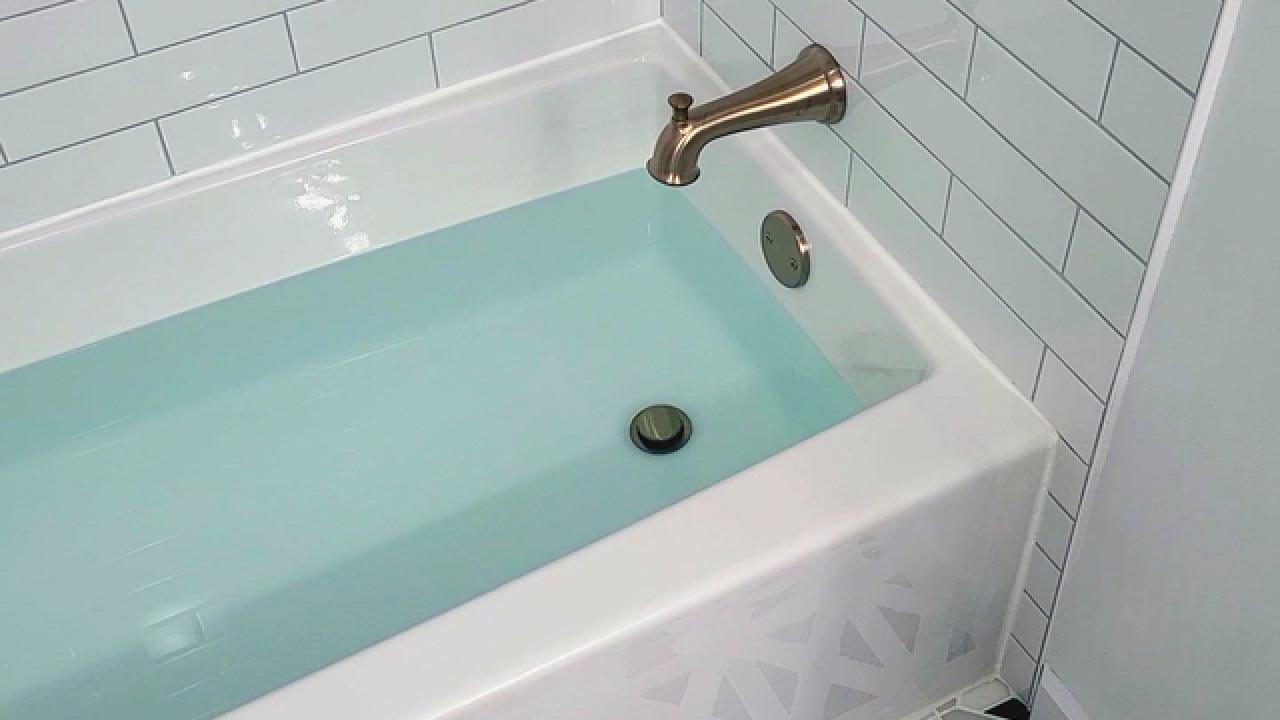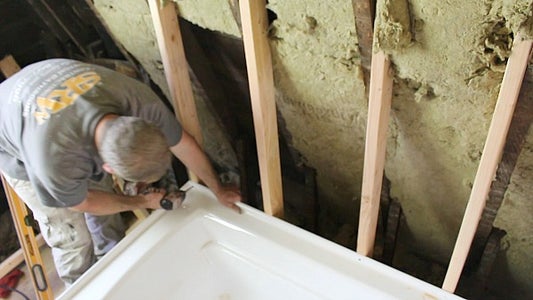Presented here in the next paragraph you will discover some extremely good content about Tools You Need to Install a New Bathtub .

Mounting a bath tub isn't specifically rocket science, yet it does require solid plumbing, carpentry, and also often, tiling skills. Replacing an old bathtub with a brand-new one is additionally a reasonably challenging job. If the old tub is easily easily accessible, the job can relocate easily; if you need to open a wall surface to eliminate the old tub and place the brand-new bath tub, the task is much harder. In either case, the project is within a residence handyman's abilities, although you will require an assistant to vacate the old tub and embeded in the new one. Make sure you have qualified on your own for the work and fit attempting it. Instead of hiring a specialist to take over a halfway-completed project, it is better to take into consideration employing one prior to you start. Opportunities are you may need a professional plumber to make tube connections.
This short article will certainly assist you set up a brand-new tub in your bathroom if you have actually currently acquired a new bathtub and don't require to change the arrangement of your previous supply of water pipelines.
Your tools as well as material list need to consist of the following:
Removing Old Touches
If you need to replace old faucets with new ones as a part of your setup, after that the first thing you should do is detach the water system. After doing so, turn on the faucets to drain pipes any kind of water staying in the system. The process of removing the existing faucets can be quite troublesome as a result of the restricted access that is usually the situation.
Use a basin wrench (crowsfoot spanner) or a faucet tool to reverse the nut that attaches the supply pipes to the taps. Have a fabric prepared for the staying water that will come from the pipelines. As soon as the supply pipelines have actually been eliminated, make use of the same tool to loosen up the nut that holds the faucets onto the bath/basin. You will certainly need to stop the solitary taps from turning throughout this procedure. When the faucets have been gotten rid of, the holes in the bath/basin will have to be cleansed of any old securing substance.
Prior to proceeding to fit the new taps, compare the pipe links on the old taps to the brand-new taps. If the old faucets are longer than the new faucets, then a shank adapter is needed for the new faucets to fit.
Suitable New Touches
If the tails of the new taps are plastic, then you will need a plastic port to stop damage to the thread. One end of the connector fits on the plastic tail of the faucet and also the other end supplies a link to the current supply pipes.
If you require to fit a monobloc, then you will need reducing couplers, which connects the 10mm pipeline of the monobloc to the conventional 15mm supply pipe.
Next off, position the tap in the placing hole in the bath/basin making sure that the washing machines are in area between the tap and also the sink. Protect the tap in place with the manufacturer offered backnut. When the tap is securely in position, the supply pipes can be linked to the tails of the taps. The taps can either be attached by utilizing corrugated copper piping or with typical faucet connectors. The former type must be linked to the faucet finishes initially, tightening up only by hand. The supply pipes can later on be connected to the other end. Tighten up both ends with a spanner after both ends have been linked.
Installing the Bathtub
Making use of the two wooden boards under its feet, put the tub in the needed position. The wooden boards are practical in evenly spreading the weight of the bathtub over the location of the boards rather than focusing all the weight onto 4 small points.
The next goal is to ensure that the bathtub is leveled all round. This can be attained by examining the spirit level and also changing the feet on the bathtub up until the spirit level checks out level.
To mount taps, fit the bottom of the furthest flexible faucet port to the appropriate supply pipeline by making a compression join; then do the very same for the various other faucet.
Activate the water supply as well as check all joints and also new pipework for leakages and also tighten them if needed. Fill the tub and likewise inspect the overflow outlet as well as the normal outlet for leakages.
Finally, fix the bathroom paneling as defined in the supplier's user's manual. Tiling as well as sealing around the tub must wait till the tub has been used a minimum of once as this will resolve it into its last position.
Getting ready for the Installation
To start with, the supporting frame supplied with the bath ought to be fitted (if called for) according to the manufacturer's instructions. Next off, fit the taps or mixer to the bath tub. When suitable the tap block, it is necessary to ensure that if the tap comes with a plastic washer, it is fitted between the bath and the taps. On a plastic bathroom, it is also reasonable to fit a sustaining plate under the taps device to avoid pressure on the bath tub.
Fit the flexible faucet ports to the bottom of the two faucets using 2 nuts as well as olives (in some cases provided with the tub). Fit the plug-hole electrical outlet by smearing mastic filler round the sink electrical outlet hole, and afterwards pass the outlet via the hole in the bathroom. Make use of the nut supplied by the producer to fit the plug-hole. Take a look at the plug-hole outlet for an inlet on the side for the overflow pipeline.
Next off, fit completion of the adaptable overflow pipeline to the overflow electrical outlet. Afterwards, screw the pipeline to the overflow face which need to be fitted inside the bathroom. See to it you utilize every one of the supplied washing machines.
Link the trap to the bottom of the waste outlet on the bathtub by winding the string of the waste outlet with silicone mastic or PTFE tape, as well as screw on the trap to the outlet. Link all-time low of the overflow tube in a similar manner.The bathroom need to now be ready to be fitted in its final placement.
Tiling Around the Bathtub
In the area where the bathroom meets the ceramic tile, it is required to seal the joins with a silicone rubber caulking. This is necessary as the fitting can move sufficient to crack a stiff seal, causing the water to permeate the wall surface between the bath and also the tiling, causing problems with wetness and possible leaks to the ceiling listed below.
You can select from a selection of coloured sealants to blend in your fixtures as well as installations. They are sold in tubes and also cartridges, as well as can securing gaps approximately a width of 3mm (1/8 inch). If you have a bigger void to load, you can load it with spins of soaked paper or soft rope. Bear in mind to always fill the tub with water before securing, to allow for the movement experienced when the tub remains in usage. The sealer can split fairly early if you do not take into account this activity before sealing.
Additionally, ceramic coving or quadrant tiles can be utilized to border the bath or shower tray. Plastic strips of coving, which are easy to use and also cut to dimension, are additionally quickly readily available on the market. It is advisable to fit the tiles utilizing water-resistant or water resistant glue as well as cement.
Bathtub Installation
How Important Is A Bathtub To Your Home?
High-quality baths, showers, and other bathroom updates are necessary when considering a smart investment in your home. It’s a room that you go to every day and one that is constantly being used by guests.The bathroom is one of the top trafficked rooms in a home and also one of the most valuable in terms of home resale.
Install Piping Before Tub
You will be using your existing drain and waste vent system, but pipes required include the hot and cold water supply lines and a pipe leading to a shower head. A mixing valve and shower head are also needed. Air chambers may be required.
Position the Tub
Lower the tub into place so that the continuous flange fits against the wall studs and rests on 1’x4' or 2’x4' supports. Anchor the tub to the enclosure with nails or screws inserted through the flanges into the studs.
NOTE: Remember, bathtubs and shower stalls may require support framing. A bathtub filled with water is extremely heavy, so check building codes and framing support before installing the tub.
Assemble Drain Connections
Assemble the bathtub drain connections by connecting the tub overflow with the tub drain above the trap, not beyond it. The trap will have a compression fitting that screws over the arm of the overflow assembly.
Place a Pipe For the Shower Head
First, locate a brass female threaded winged fitting and attach it to a framing support via a screw or a nail. Then run a pipe up the wall for the shower head. Sweat or solder the other side of the brass fitting to the top of the pipe.
Attaching Hot and Cold Water Lines
Attach your water lines for both hot and cold by sweating these directly into the hot and cold ports of the mixing valve. The mixing valve will be how water enters the tub’s system, not by the pipes themselves.
Install the Spout
Extend a piece of 1/2 inch pipe, or whichever length is specified in the manufacturer’s instructions, for the tub spout. Sweat on a male threaded fitting at the end of the pipe or use a brass nipple of the proper length and a 1/2 inch cap.
NOTE: At this point you should have your rough-in plumbing work inspected before proceeding further.
Check For Leaks
Restore the water pressure and check the drain connection and the supply pipes for any sign of leaking.
estore the Bathroom Wall
Replace the wall with moisture-resistant drywall as a base for your wall covering. Seal the joints between the wall and your new tub with silicone caulk as protection against water seepage.
https://www.berkeys.com/2016/12/02/bathtub-installation-dallas/

I recently found that piece of writing on How to Install a Bathtub: Install an Acrylic Tub and Tub Surround while doing a lookup on the internet. If you please take the opportunity to share this blog entry if you enjoyed reading it. Thank you for your time. Please check up our blog back soon.
Need Help? Hire Us Now!